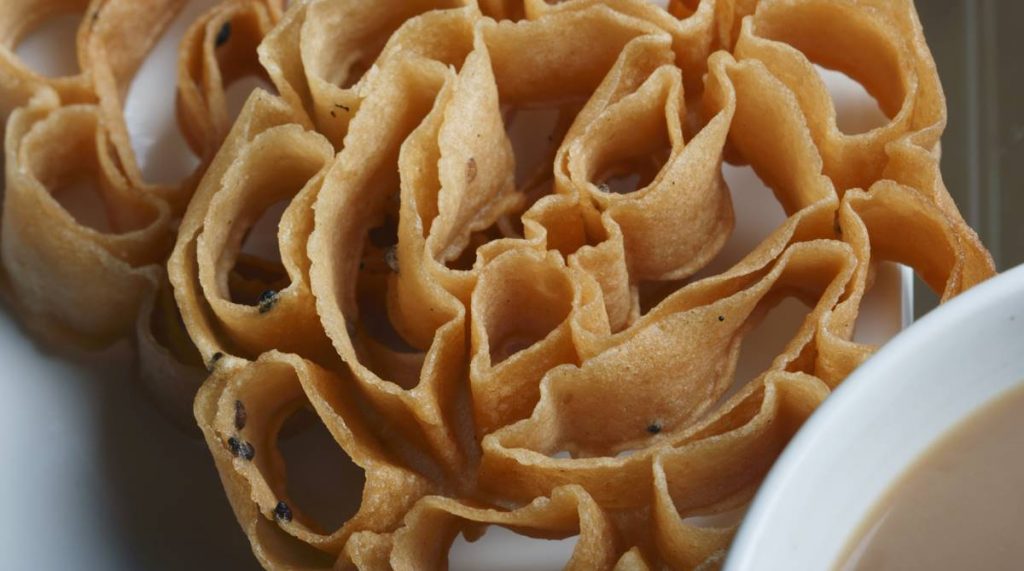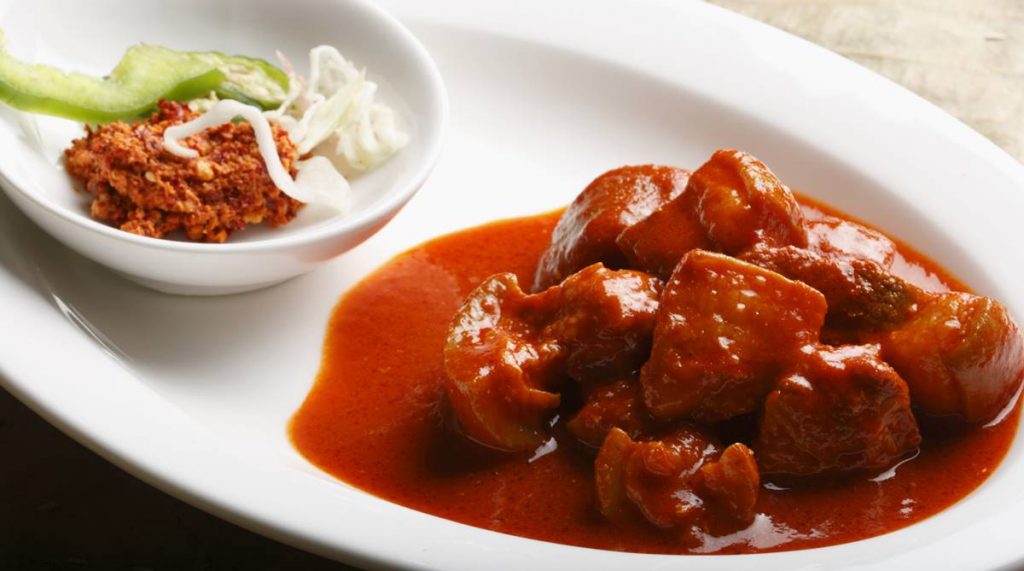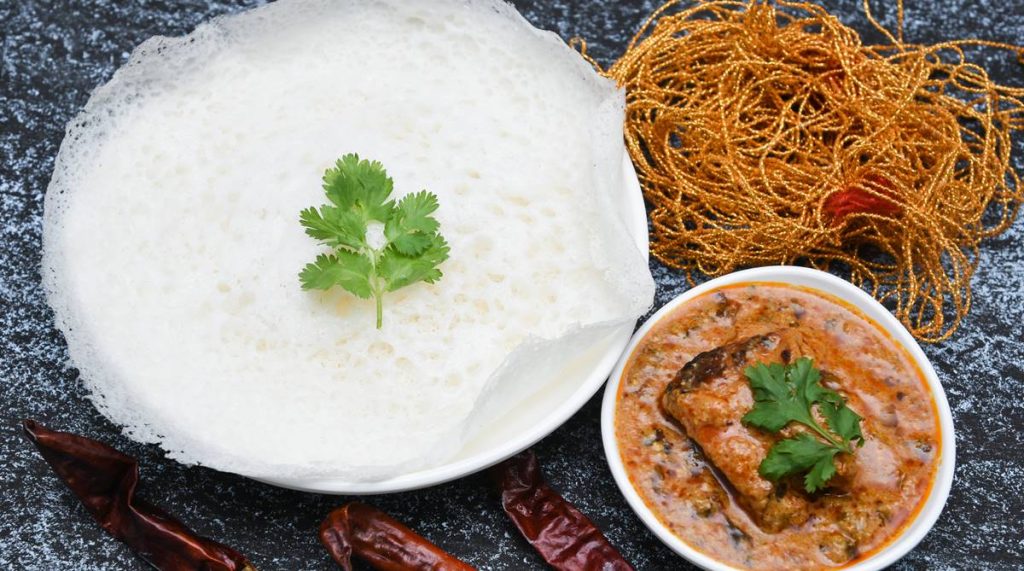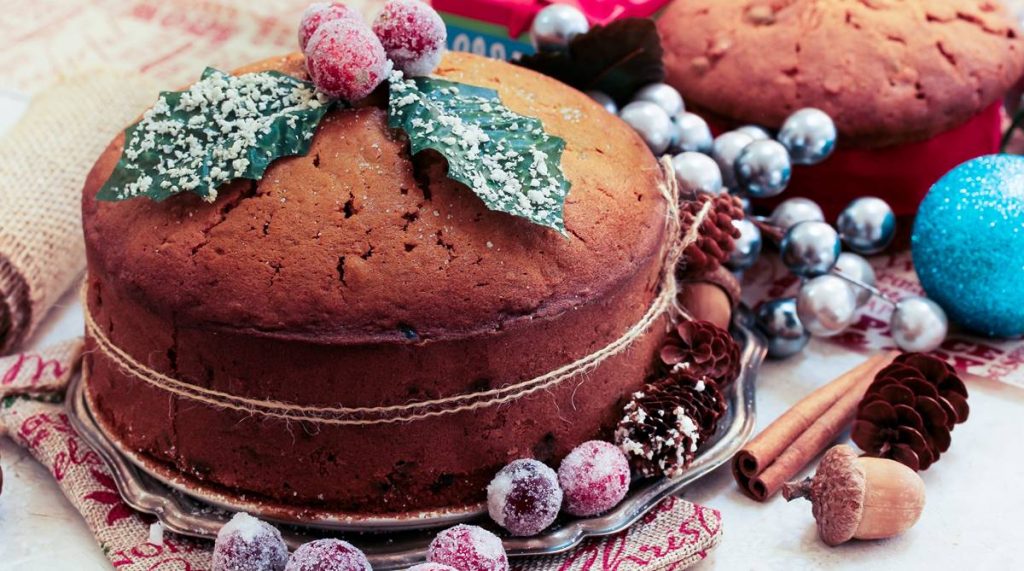Denise Richards recollects the Christmas her ex-husband got arrested, called from jail
Hollywood actress Denise Richards is revisiting some dark memories as she looked back on her complicated past with her ex-husband Charlie Sheen.
There is room for everyone at the Christmas table, and Sahapedia.org explores how the array of diverse dishes on it across India is heart-warming evidence to its ancient traditions of cultural intermingling.
Swathi Gopalakrishnan | New Delhi | December 24, 2018 3:29 pm | Updated : December 26, 2018 4:35 pm

An overwhelming majority in India has come to celebrate Christmas, leading to the culinary offerings being secularised via subtle appropriations of non-native influences in regional traditions. (Photo: Getty Images)
Heap on the wood, kindle the fire,
Boil the flesh well, and mix in the spices.
And let the bones be burnt
Ezekiel 24:10
Come December, India is mellow with the sentiment of gemütlichkeit, softening at the edges and living up to its sobriquet of a secular, pluralistic and tolerant nation. When Christmas rolls around, nothing brings out the catholicity in Indians like the promise of alimentary deliverance. And sure enough, Noël delivers. Christmas in India is a dazzling showcase of the marriage of native and foreign traditions, with food being one of its most celebrated offsprings.
Advertisement
Although, according to the 2011 Census, a mere 2.3 per cent of India’s population is Christian, largely concentrated in the south, west and north-east, an overwhelming majority has come to celebrate Christmas, leading to the culinary offerings being secularised via subtle appropriations of non-native influences in regional traditions. Here’s a look at some uniquely Indian Christmas foods that have adopted the formats, styles and ingredients of regional cuisines.
Advertisement
Fried and Tested
Christmas snacks in India are a comprehensive array of mostly deep-fried items—the fritters, fried dumplings, and stuffed pastry available in sweet shops and laden on the kuswars or consoados, traditional snack platters of the Goan or Mangalorean Christians.

Chief among them are rose cookies that, by any name, taste as sweet. The Anglo-Indian Christmas staple is a rice flour-based deep-fried rosette-shaped sweet, also known as acchu murukku in Tamil Nadu, rose de coque in Goa, kokkis or roce cookies in Mangalore, and achappam in Kerala. A distant fair-weather relative of the achappam is the kuzhalappam, a cannelloni-like deep-fried snack, unique to Kerala Christians and enjoyed sweet or savoury.
Kulkul or kalkal is another kuswar platter regular in Goa and Mangalore. These gnocchi-like fried and sugar-sweetened nuggets are immensely popular in the south too. Only slightly different are the kormolas and carombolas or phoolancho kalyo (flower bud cookies), also a Goan consoado staple and made with cake flour, semolina, and coconut milk. Kulkuls and kormolas are close relatives of the shankarpali or shakkarpare, a festival favourite in northern India that has a reprisal during Christmas as well.
Goan neureos or nevris are crescent- shaped deep-fried turnovers filled with shredded poppy seeds, cashews, raisins, and the west-coast staple desiccated coconut. The sweet draws on the heritage of the north’s karanji and its many local variants, such as kajjikayalu (Andhra), gujia (west and central India), gujji (Punjab) and somasi (Tamilnadu).
Another Indo-Portuguese Christmas delight is the Goan fugea or fugiya, named for its spherical appearance—fuga means balloon in Marathi. Fugiyas are served as snacks as well as part of the main course, where they accompany meat and gravy dishes. Come December, Tamil Nadu households are redolent with the smell of athirasam, a flattened doughnut made of molten jaggery-mixed rice flour that is fermented in the sunlight, flattened into thin discs and fried to a rich brown.
READ | Kolkata Christmas: Past and present
Meat the Family
Whether roasted, dry or doused in gravy, meat dishes form the centre of Christmas spreads, and are among the most varied and regionally specific foods. Goa has many festive favourites, such as pork vindaloo, mutton tope, and duck indad, but its exclusive Christmas offering is the gravy-drenched sorpotel, traditionally made with pork liver and other offal, a Portuguese colonial legacy. In Mangalore, sorpotel is transformed into pork indad, a tangier, spicier tamarind- and mint-infused upgrade.

The obligatory beef or duck (tharavu) roast forms the mainstay of the Syrian Christian Christmas feast, but distinguishes itself from the Western Christmas roast in its preparation: instead of being roasted whole, it is pressure cooked in pieces, and served along with its cooking juices with coconut-milk based rice flour pancakes called appam.
Pork dishes feature prominently on the Christmas menus of the ethnographically diverse northeastern communities. In Meghalaya, the Khasi dishes of doh jem and doh nei-iong, made using smoked pork and black sesame seeds, enjoy pride of place, and in Nagaland, it is pork ribs and pork with bamboo shoots. Manipur has its own popular riff in gak jang, eaten with spicy king chilli chutney. An exception to the Christmas pork-fest is Mizoram’s popular chicken dish kaukswe, a Myanmarese legacy, usually accompanied with a bowl of rice noodles. Then there are eromba, a Manipuri fermented fish dip, and kenme nku, a Naga preparation of kidney beans and fermented soy or yam pastes, that reflect the unique culinary style of the ethnic people.
READ | Christmas day at the cellar
Not Without Rice
Though not strictly Christmas fare, the ubiquitous rice is the staple accompaniment in varied forms—for instance, as pancakes called kallappam (toddy flapjacks) and polays (Mangalorean yeasted dosa), both customary breakfast dishes on Christmas, and steamed rice cakes such as the Mangalorean sanna or Khasi putharo—and serves the critical function of mopping up the gravies and sauces. Stand-alone rice preparations include North India’s heavily spiced yakhni pulao and the sweet saffron rice or zarda pulao, and Meghalay’s mildly-spiced jadoh.

Rice also contributes overwhelmingly to dessert, in dishes such as pinag, also a part of the consoada and made from the Goan pantry staples of coconut, palm jaggery and plump red rice. Representing the South are tati pandu kudumu, a Godavari-basin speciality of steamed rice-flour pancake with ice-apple pulp, and bellam thaligalu, jaggery-infused rice noodles from Andhra.
Cakes & Other Bakes
Indian fudges or barfi too are omnipresent in Christmas desserts, the Goan cuisine making the most notable contributions with chonya doce or doce de grao, a Goan cardamom-spiced fudge of mashed Bengal gram and coconut (influenced by the chana dal kappa), and kokat and bolinhos, regional interpretations of cookies with coconut.

According to food historian Odette Mascarenhas, an expert in Goan Christian food traditions, the use of locally abundant ingredients, such as semolina, rice, coconut and jaggery, which also enabled substitution of western ones (almonds with cashews), formed the cornerstone of regionally adapted colonial desserts, until the arrival much later of wheat flour via trade.
Elucidating on the origin of desserts in Goa, Mascarenhas adds that nuns were the main creators of a number of Portuguese-inspired desserts, especially those using eggs (the egg whites left over from starching their wimples were used to make sweets). Some of these are the traditionally 12-layered bebinca; the quintessential local Goan coconut-based cake bolo sans rival; a cashew-based buttercream cake adapted from the original almond; and the Middle-Eastern baatica or baath cake, occasionally infused with rosewater as a homage to its roots and naturalised by local ingredients such as coconut and semolina.
From Puducherry and erstwhile Allahabad come cakes that are closer to their western ancestors, but fused with the Indian classic ghee. The rum-drunk vivikum cake of Puducherry, a creole import, becomes regional by using roasted semolina and ghee, while the Allahabadi cake is mixed through with petha, locally produced marmalade, and ghee, and redolent in spices such as fennel, mace, nutmeg, cinnamon and ginger.
Truly, there is no place more unifying than a festive table, where there is room for everyone. The huge array of dishes provides but a mere glimpse of India’s hoary traditions of cultural intermingling, in the true Christmas spirit. It seems Christmas bring out the diversity, curiosity and adaptability of the Indian palate like no other festival. When biryani and rum cake, duck roast and appam are no longer strange bedfellows and kuswar trays laden with fugeas, neureos, and doce de graos are traded for shankarpalis, karanjis, and kulkuls, one can conclude with a happy burp that the proof of the Christmas pudding, or barfi in this case, is indeed in the eating!
(This article is an edited version of articles on Christmas, published on www.sahapedia.org, an open online resource on the arts, cultures and heritage of India. Sahapedia offers encyclopedic content on India’s vast and diverse heritage in multimedia format, authored by scholars and curated by experts — to creatively engage with culture and history to reveal connections for a wide public using digital media.)
Advertisement
Hollywood actress Denise Richards is revisiting some dark memories as she looked back on her complicated past with her ex-husband Charlie Sheen.
The musical group Jonas Brothers are getting off the stage, and getting onboard for a movie. The brothers are reuniting with Disney to produce and star in a Christmas comedy movie, slated for the 2025 holiday season.
Three people were shot and one was stabbed on Christmas night in a shooting and stabbing incident at an international airport in Phoenix, the capital of the southwestern US state of Arizona, according to authorities and local news outlets.
Advertisement
